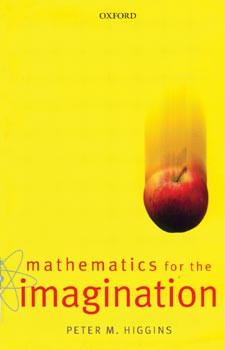by Peter M Higgins, Oxford University Press, ISBN 0198604602, £7.99 (€13).

As a citizen of Antwerp, the place where the Renaissance produced some of its finest atlases, I was of course very pleased to read a book that for once properly explains the work of Gerardus Mercator.
Fortunately (or perhaps unfortunately), I am not familiar with Peter Higgins’ other books that popularize mathematics, so this is an impression of one work only. The author states that he wants to give something interesting to everyone. That is a very large audience, and I’m convinced that reality is somewhat more selective.
The book starts densely; each sentence has its weight, and speed-reading will not work. While I personally like that, it may lose some of the target audience now and then. I found the beginning of the trip rather bumpy; the first figure is a strange map of the world, and the second one has a confusing caption. The explanation of the date line is simply inadequate. A book on mathematics that still uses imperial units in a metric world is also annoying. Some concepts are introduced without any previous explanation. A few errors are merely funny; the inhabitants of the US state of Nevada will be pleased to learn that they share a border with Colorado, so maybe we do need five colours to paint the map!
However, after the rough road of the first 40 pages or so, the going gets good, and I found the reading most pleasing. A book of this type will inevitably talk about how certain parts of mathematics came to be discovered, and that means lots of history and people. Higgins’ book has a number of interesting details that were new to me, including the fact that Abraham Lincoln took Euclid’s elements with him on trips, as a source of mental relaxation.
There is a lot on classical plane geometry, mostly involving triangles. It is very pleasing to be able to refresh your school maths with these excellent chapters. There are some very good summaries of the properties of conical sections, though the accompanying drawings should have been made using proper tools; conical sections are too beautiful to be illustrated with the crude approximations the publishers have allowed. This made me cringe more than once!
The chapter on symmetries seems a bit out of place, especially considering that there is no treatment of groups, fractals, or the theorems of Gödel and Turing. A number of quite recent, but still “classical” developments that are familiar to everyone got no mention: Rubik’s cube for example, and more on Penrose tilings. Today’s computer graphics and printing are almost entirely based on Pierre Bézier’s curve, and some entertaining exposition of its remarkable properties would have been a welcome addition to the geometry parts of the book.
However, the mere fact that I have a thirst for more means I have spent several hours of exciting reading.








